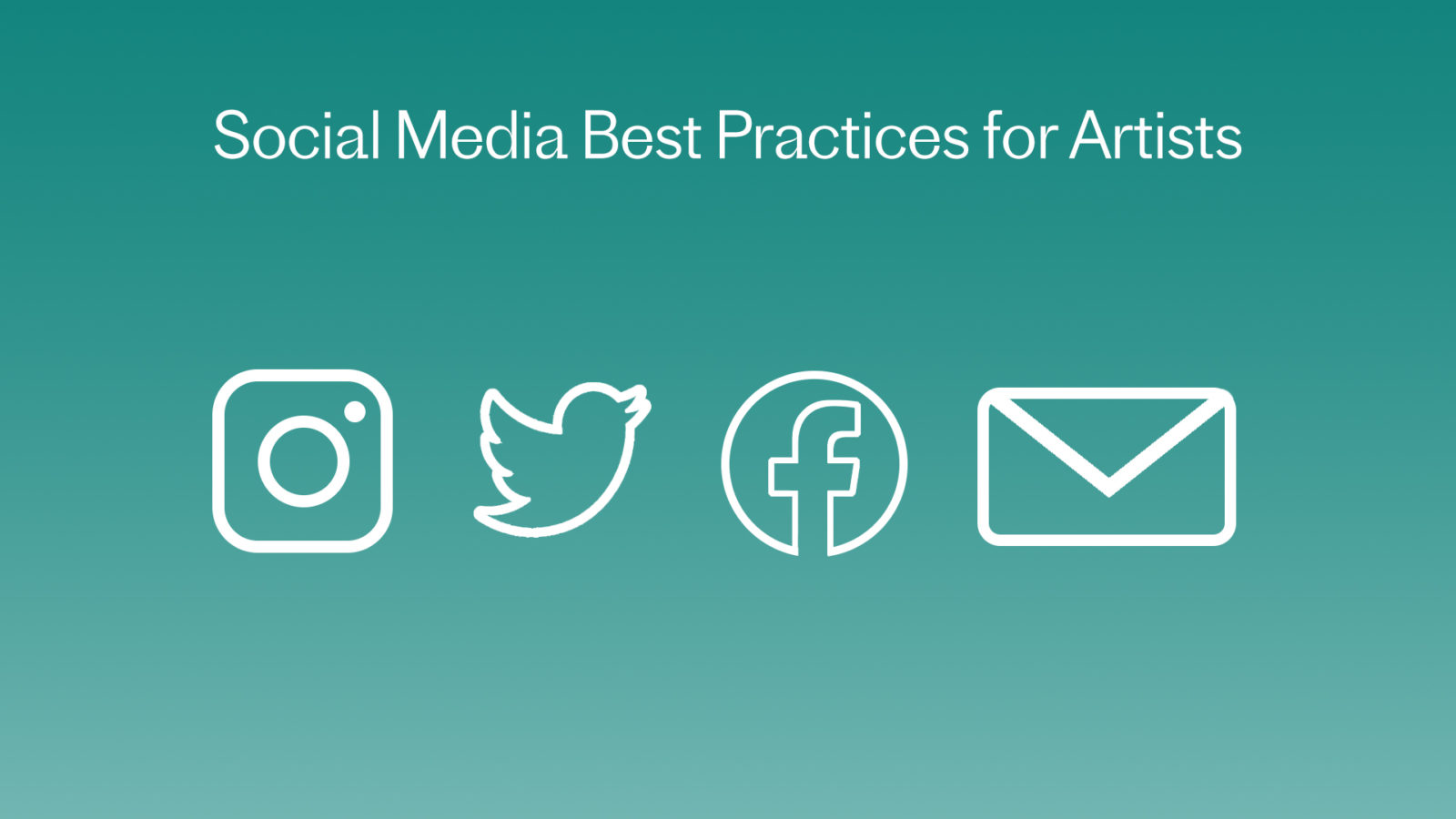Social Media Best Practices for Artists

Building a social media following can be a daunting task, especially for those starting out. Many artists have made social media a natural extension of their practice, while others only use it when they have time or when they want to promote their work. Regardless of your experience with social media, communicating across different platforms can take time and some strategic thinking. We have created a guide of best practices for artists who want to gain a following on the most popular digital platforms.
Sign up to receive our emails for an in-depth, downloadable PDF guide of best practices for artists for Email, Instagram, Twitter, and Facebook.
Holistic Social Media Strategy
Managing a digital presence through social media can take more time than you expect, especially if you choose to engage communities on multiple platforms. While there are services like Hootsuite or Buffer that help manage many kinds of social media accounts in one place, these are probably more useful for businesses or artists with an actual team dividing the work. The best, most authentic way for individuals to engage with audiences on each platform is through the actual application itself.
Aside from connecting with your friends, family, and artistic network, and keeping abreast of the cultural buzz, you may not yet use social media as a business tool. If you only use social media during your down time, and have less bandwidth to strategically promote your artistic practice, we recommend implementing a digital media strategy incrementally. First, focus your time by building out a website that represents the narrative arc of your artistic career. Make sure you update this whenever you have new work, with links to press and reviews, and a more in-depth exploration of your practice. This gives audiences who might be curious about you a “landing page,” or a place to find out everything they wanted to know.
Once that is set up, you can start building out an email audience and newsletter, allowing people who want to follow your work to easily sign up through your website. This list of email contacts can become your die-hard fan base if you keep them updated about your practice through regular emails.
Planning Your Posts Ahead of Time
Social media platforms should generally be used to keep your existing audience up to speed about your new work, works in progress, and any other updates about your practice. Use simple tools like a Google doc and calendar reminders to draft and map out your posts and strategically build your narrative over time. Social platforms can help to both build grow your network, and drive sign-ups to your email newsletter, and traffic to your website. As you continue to give followers news about yourself, you will build a network of fans that are knowledgeable about your artistic work, and may even be dedicated enough to spend money on, or engage with your work in the ways you want them to.
Think strategically ahead of time about what kind of audience you want to cultivate through digital platforms—your user demographics, the age, income-level, and backgrounds of your followers could drastically affect your social media strategy. For instance, many younger art lovers may not be as active through email or Facebook, while they may be very engaged with more visual apps like Instagram. On the other hand, a higher percentage of people from their forties to their sixties use Facebook more often. Research up-to-date social media usage statistics to find out where your potential audience spends most of their time, and make it easy for them to learn about you and share your work with their own audience.
Keep It Fun
Above all, social media should be an enjoyable, natural extension of how you think about engaging an audience. If you dread making posts on a certain platform, then rethink your approach to it so that it actually generates ideas and positivity, and doesn’t hinder growth. If a platform isn’t “sparking joy” for you, get rid of it! Social media is forgiving to people who want to minimize or start from scratch.
We have compiled some best practices for each platform, but feel free to experiment with each of them, and see what works for you. Sign up for our email newsletter for the full guide.
